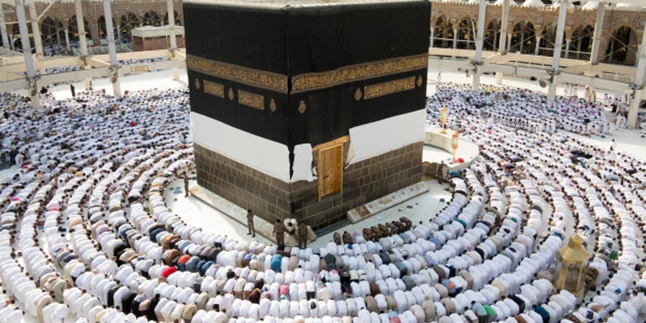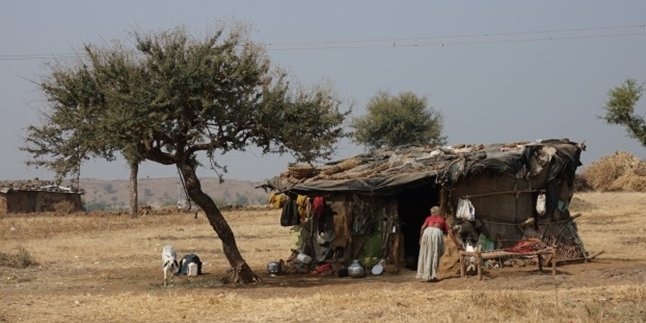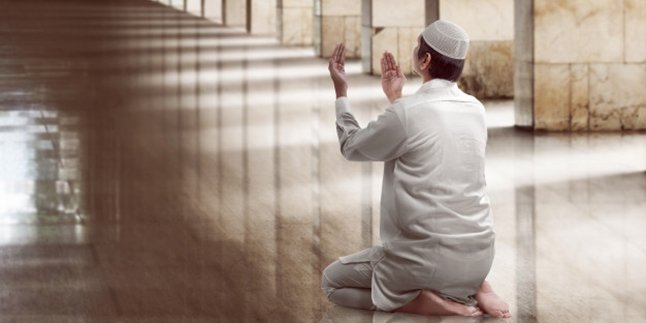Kapanlagi.com - Umrah is one of the religious activities for Muslims. This worship is often referred to as the lesser hajj. This is because we have to wait in line to perform hajj worship, as the queue for hajj worship is very long. That is why many people, while waiting to perform hajj worship, also perform umrah worship. And of course, you must know the proper umrah procedure according to the sharia.
The difference between umrah and hajj lies in the time and place of implementation. If hajj worship can only be performed between the 1st of Shawwal and the 13th of Zulhijah, then umrah can be performed at any time except on certain days such as Arafah Day on the 10th of Zulhijah and the Tasyrik days on the 11th, 12th, and 13th of Zulhijah. The essence of the hajj worship process is to stand at Arafah Field on the 9th of Zulhijah after sunset until Maghrib.
As for the umrah procedure, the essence is only to perform tawaf and sai. Both are preceded by wearing ihram clothes at miqat (designated place) and ended with tahallul (shaving). For those of you who want to perform umrah, you must know how to perform umrah according to the sunnah and sharia. Therefore, according to various sources, here are some good ways to perform umrah in accordance with Islamic law. Let's check it out KLovers.
1. Umrah Preparation
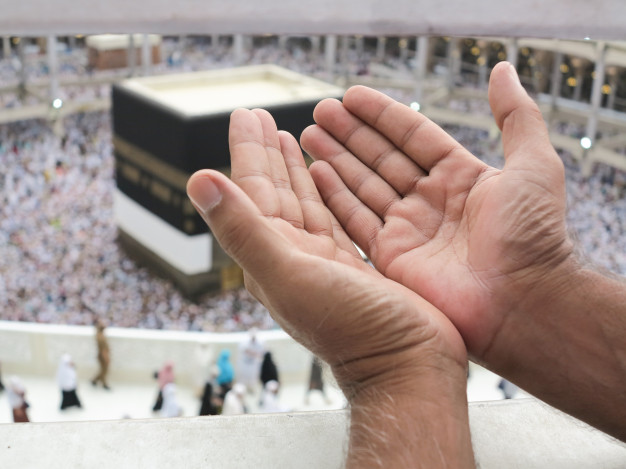
Illustration (credit: Freepik)
The first procedure for umrah is to prepare yourself. Before performing umrah activities, it is advisable to cleanse yourself and stay away from impurities. And for that, you can prepare as follows:
- Perform major ablution (ghusl)
- Use the best fragrance
- Trim your nails
- Thin your mustache
- Shave your armpit and pubic hair
- Wear ihram clothing for both men and women
2. Intention
After being ready in preparation, the next step is to make an intention. Just like other worship activities, you are also required to make an intention to perform umrah. And here is the intention that you need to say:
"Labbaikallahumma 'umratan"
Which means: Here I am, O Allah, answering Your call to perform umrah.
3. Rules of Wearing Ihram
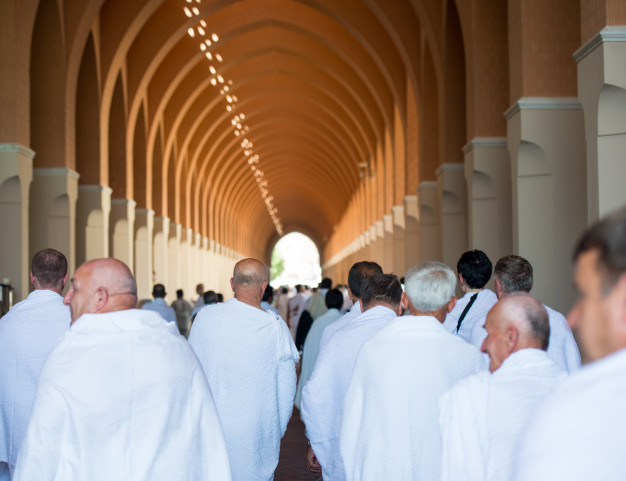
Illustration (credit: Freepik)
Before reciting the intention, you need to wear ihram clothing. Ihram clothing for men consists of 2 pieces of unstitched fabric that are worn to cover the lower part of the body, and another piece is wrapped around. Meanwhile, ihram clothing for women is to cover the entire body except the face and palms of the hands. The recommended color for ihram clothing is white.
However, after wearing ihram, umrah pilgrims are prohibited from engaging in certain activities or wearing anything on their bodies, such as:
Prohibitions for Men:
- Wearing regular clothes
- Wearing footwear that covers the ankles
- Covering the head with a cap, hat, etc.
Prohibitions for Women:
- Wearing hand gloves
- Covering the face
Prohibitions for Men and Women:
- Using perfumes
- Cutting nails, shaving, or plucking hair
- Hunting or killing any animal
- Getting married, arranging marriages, or proposing marriage to women
- Engaging in intimacy
- Insulting, fighting, or using foul language
- Cutting plants around Mecca
4. Miqat
The second procedure of umrah is Miqat. Miqat is a designated place where the Prophet Muhammad (peace be upon him) instructed the pilgrims to pronounce their first ihram, for those intending to perform Hajj or Umrah. However, the location of the miqat varies depending on where the pilgrims are coming from, including the following:
- If the pilgrims are coming from the direction of Madinah, then it is obligatory to make the intention for ihram at Dzulhulaifah or known as Bir Ali.
- If the pilgrims are coming from Syria, such as Palestine, Lebanon, Jordan, and others, then their miqat is at Al Juhfah.
- If the pilgrims are coming from Riyadh and its surroundings, then their miqat is at Qornul Manazil (As Sailul Kabiir).
- As for those coming from the south or from Yemen, their miqat is at Yalamlam (As Sadiyah).
- If the pilgrims are coming from Iraq, their miqat is at Dzatu Irq (Adh Dhoribah).
Those are the five miqat locations that have been designated by the Prophet Muhammad. If someone passes the miqat without assuming ihram (intentionally), they must return and assume ihram from that place. If not, they are obligated to pay damm (penalty) by slaughtering a goat and distributing it to the poor in Makkah.
5. Heading towards Masjidil Haram

Illustration (credit: Freepik)
On the way to Masjidil Haram, increase the recitation of the talbiyah phrase that Prophet Muhammad SAW always uttered during Umrah and Hajj. And the appropriate time to recite the talbiyah for Umrah is when starting the Tawaf. Here is the recitation of the talbiyah:
"Labbaik Allahumma Labbaik. Labbaik Laa Syarika Laka Labbaik. Innal Hamda Wan Ni'mata Laka Wal Mulk Laa Syarika Lak"
Meaning: Here I am, O Allah, Here I am. Here I am, there is no partner for You, Here I am. Indeed, all praise, blessings, and sovereignty are Yours. There is no partner for You.
6. Tawaf
Next, the procedure for umrah is by performing tawaf, and here are some things that must be done during tawaf:
- Before entering Masjidil Haram, it is recommended for the pilgrims to perform ablution first. Pilgrims can enter Masjidil Haram through any door, but it is recommended to follow the example of the Prophet Muhammad SAW who entered through the door of Babus Salam or Bani Syaibah.
- When entering Masjidil Haram, it is recommended to recite the prayer "Bismillah Wash Sholatu Was Salamu 'Ala Rasulullah. Allahummaftahli Abwaba Rahmatika"
Meaning: In the name of Allah, blessings and peace be upon the Prophet. O Allah, open the doors of Your mercy for me.
- After that, go down and continue to the place of thawaf (mataf). Pilgrims start thawaf from a straight line (near Hajar Aswad) between the door of the Kaaba and the green light sign on the upper floor of Masjidil Haram.
- Here, the pilgrims are given several options, including:
1. Taqbil, which is kissing Hajar Aswad
2. Istilam and Taqbil, which is touching, feeling, and kissing Hajar Aswad
3. Istilam is the act of wiping the Hajar Aswad with the hand or an object that we hold, then kissing the object.
4.Waving the hand or the object that we hold three times, without kissing it but saying Bismillah, Allahu Akbar (In the name of Allah, Allah is the Greatest).
5.One of the options for this ritual is to be done every time passing by the Hajar Aswad and the Rukun Yamani during rounds one to seven. If unable to kiss the Hajar Aswad and the Rukun Yamani due to security reasons caused by the large number of Umrah pilgrims, then one can choose istilam with the hand or an object, or just wave the hand or the object that we hold.
- Then, during rounds 1-3, male pilgrims are recommended to jog lightly. While during rounds 4-7, they can walk normally. As for the procedure for female Umrah, there is no jogging during the Tawaf.
- Throughout the Tawaf, recite prayers while between the Rukun Yamani and the Hajar Aswad. The prayer always recited by the Prophet Muhammad (SAW) during Tawaf is the prayer of sweeping the universe, which is:
"Rabbana Atina Fiddunya Hasanatan Wa Fil Akhirati Hasanata Wa Qina 'Adzabanar"
Meaning: Our Lord, give us goodness in this world and goodness in the hereafter, and protect us from the punishment of the Hellfire.
7. Heading towards Maqam Ibrahim
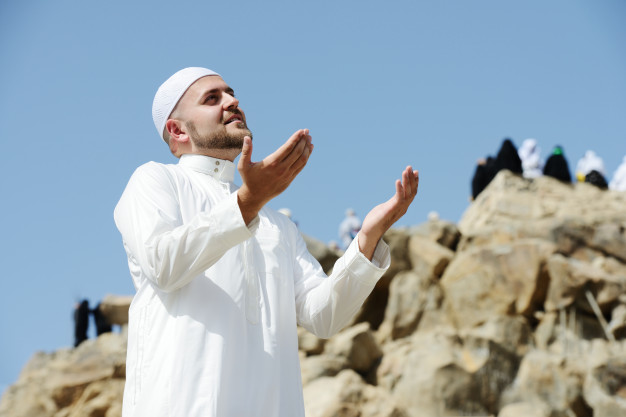
Illustration (credit: Freepik)
Maqam Ibrahim is not a grave and is not related to any other graves. However, it is the place where Prophet Ibrahim stood to build the Kaaba. Here, you will perform a two-rak'ah prayer.
In the first rak'ah, recite Surah Al-Fatihah followed by Surah Al-Kafirun. In the second rak'ah, recite Surah Al-Fatihah followed by Surah Al-Ikhlas. The guidance to recite these surahs is explained in a authentic hadith, from the prayer of Jabir bin Abdillah radhiyallahu anhu, which states:
"The Prophet shallallahualaihi wa sallam placed Maqam Ibrahim between himself and the Kaaba, then he performed a two-rak'ah prayer. In those two rak'ahs, he recited Qulhuwallahu ahad (Surah Al-Ikhlas) and Qul yaa-ayyuhal kaafirun (Surah Al-Kafirun)."
When you are heading towards Maqam Ibrahim, it is recommended for the congregation to recite:
"Wattakhodzu mim maqoomi ibroohiima musholla"
Meaning: And take the place of Ibrahim as a place of prayer (QS. Al Baqarah: 125)
8. Drinking Zam-Zam Water
Then the next umrah procedure is to consume Zam-Zam water. Before drinking Zam-Zam water, you can recite the prayer:
"Waasi'an Wa Syifaa'an Min Kulli Daa'in Wa Saqomin Bi Romhatika Ya Arhamar Rohimiin"
Meaning: O Allah, I ask of You beneficial knowledge, abundant sustenance, and healing from all diseases.
9. Sai
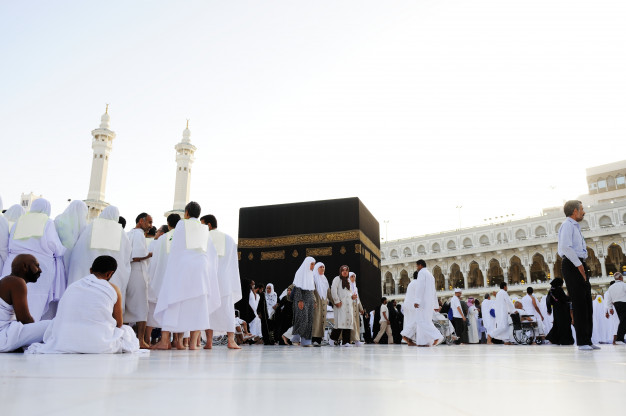
Illustration (credit: Freepik)
There is also Sai as one of the umrah procedures. Sai itself is the activity of Sai and Tahallul. Sai is a small run between the hills of Safa and Marwa. When on the hill of Safa, the pilgrims are instructed to climb up the hill and face the Kaaba from above.
Sai starts from Safa to Marwa, which is counted as one trip. So, Safa to Marwa 1, Marwa to Safa 2, and so on. Sai ends at Marwa. Sai is done by walking, but at the boundary between 2 green lights, it is done by running.
And when doing Sai, you can recite a prayer, as done by the Prophet Muhammad, such as:
Allahu akbar (3x),
Laa illaha illallahu wahdahulaa syariikalahuu, lahuulmulku wa lahuul hamdu yuhyii wa yumiitu wa huwa 'alaa kullii syai'in qadiir
Meaning: Allah is the Greatest, Allah is the Greatest, Allah is the Greatest. There is no deity worthy of worship except Allah alone, without partner. His is the dominion, and His is the praise. He gives life and causes death, and He is over all things competent.
10. Tahallul
And the last procedure of umrah is by performing Tahallul. Tahallul is the end of the umrah worship which is marked by shaving the hair. For men, it is better to shave until bald, but if not until bald, it is okay. As for the umrah procedure for women, they only need to shave as much as necessary. By performing Tahallul, the umrah worship is complete according to the Sunnah.
That is the proper umrah procedure according to sharia and that you must know before going to the holy land. Hopefully, by knowing this, it will make it easier for you to perform umrah worship and do it with devotion.
(kpl/dhm)
Disclaimer: This translation from Bahasa Indonesia to English has been generated by Artificial Intelligence.
